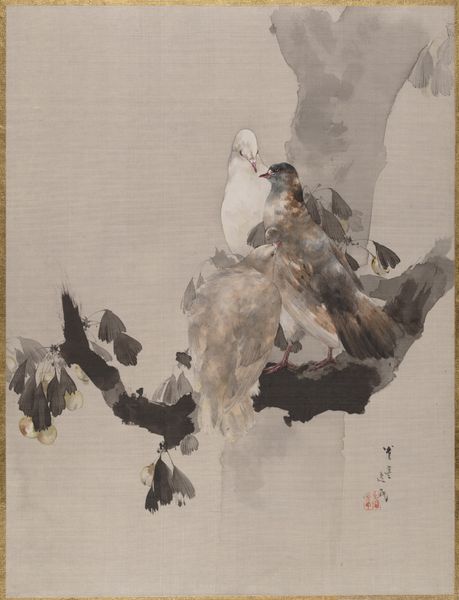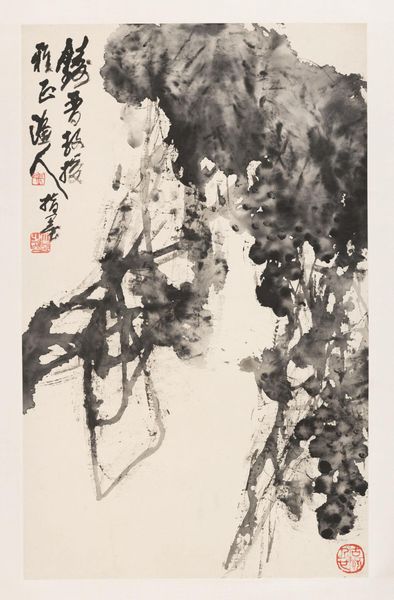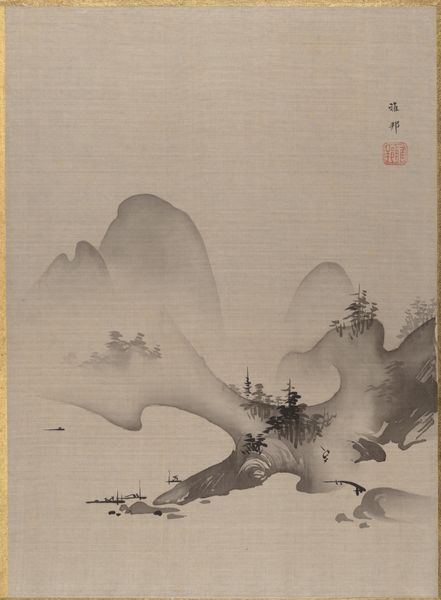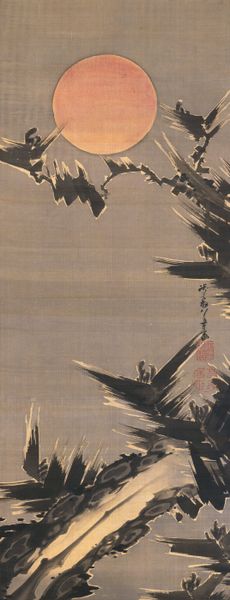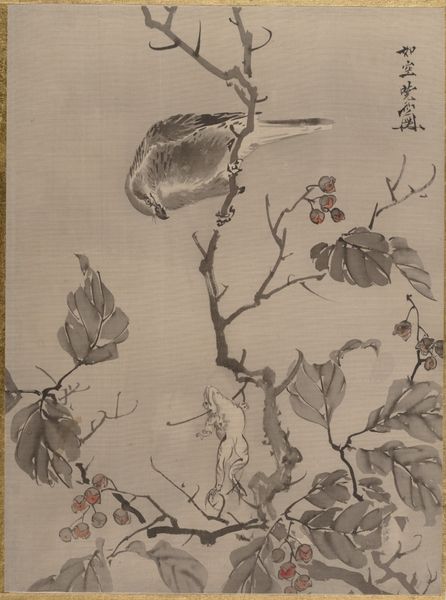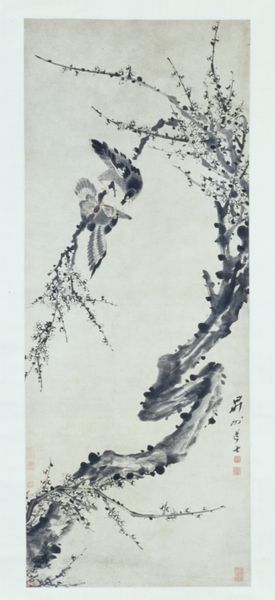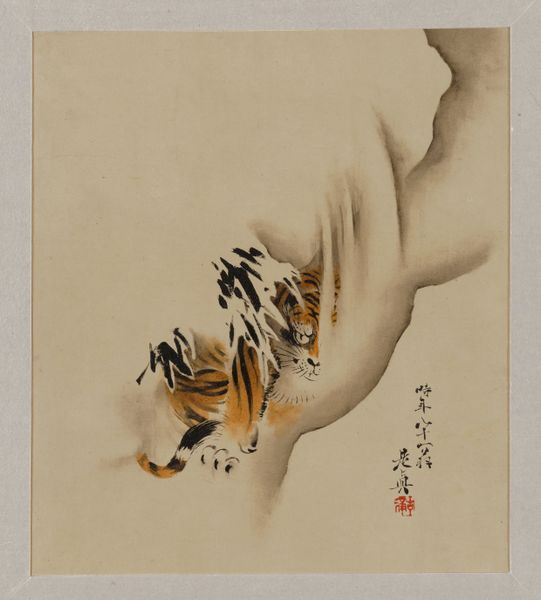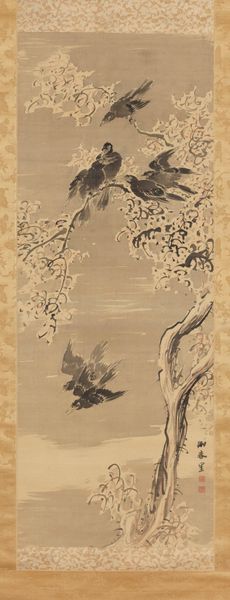
drawing, watercolor, ink
#
drawing
#
water colours
#
asian-art
#
landscape
#
figuration
#
watercolor
#
ink
#
orientalism
#
realism
Dimensions: 14 x 10 3/4 in. (35.6 x 27.3 cm)
Copyright: Public Domain
Curator: This watercolor and ink drawing, "Eagle in a Tree" by Watanabe Seitei, created sometime between 1877 and 1897, offers a striking depiction of the natural world. The artwork is part of the collection at the Metropolitan Museum of Art. Editor: The composition immediately grabs your attention. The subdued palette—mostly grays—lends the piece a quiet dignity. The sharp focus on the eagle itself, set against the soft tree, creates an interesting tension. Curator: Right, the materials speak volumes about the artist's background. Seitei's artistic formation came during a pivotal moment of political and cultural upheaval as Japan opened up to Western trade and influence. Watercolors, in particular, saw an increasing demand, with the subsequent rise of new markets, workshops, retailers and consumer habits that greatly impacted the production of the artist at that time. Editor: I'm fascinated by the structural aspects; note how the branch the eagle sits upon nearly bisects the pictorial space diagonally. The eagle becomes both grounded and poised for flight— a symbolic threshold, perhaps? And did you notice how little background there is—nearly nonexistent save for tonal variations of the paper itself? Curator: Yes, and it seems Watanabe Seitei wanted to explore traditional art, too. At the end of the nineteenth century, we have paintings done to appeal to Western tastes. But at the same time, he made works based on ancient traditions with no Western influence whatsoever. He seemed conflicted. Editor: Exactly! I see that interplay reflected even in the formal qualities. There's a tension between strict realism in rendering the eagle’s form and something almost impressionistic in the blurring of background and focus on specific details. It feels very balanced in this visual negotiation. Curator: It brings us back to thinking about how cultural exchanges affected the production of paintings and watercolors for sale, both domestic and abroad. One sees the eagle’s gaze as focused and almost expectant – I wonder if this positioning somehow suggests the negotiation Japan faced as it emerged into a new global economy? Editor: That reading feels very accurate. What I find most compelling is the exquisite rendering—the fine lines and careful blending. I hadn’t considered the complex intersection of production pressures that you brought forward. Thank you. Curator: Of course. And your interpretation gave the watercolor new layers. Thanks to your vision, I can see this piece through different eyes.
Comments
No comments
Be the first to comment and join the conversation on the ultimate creative platform.
